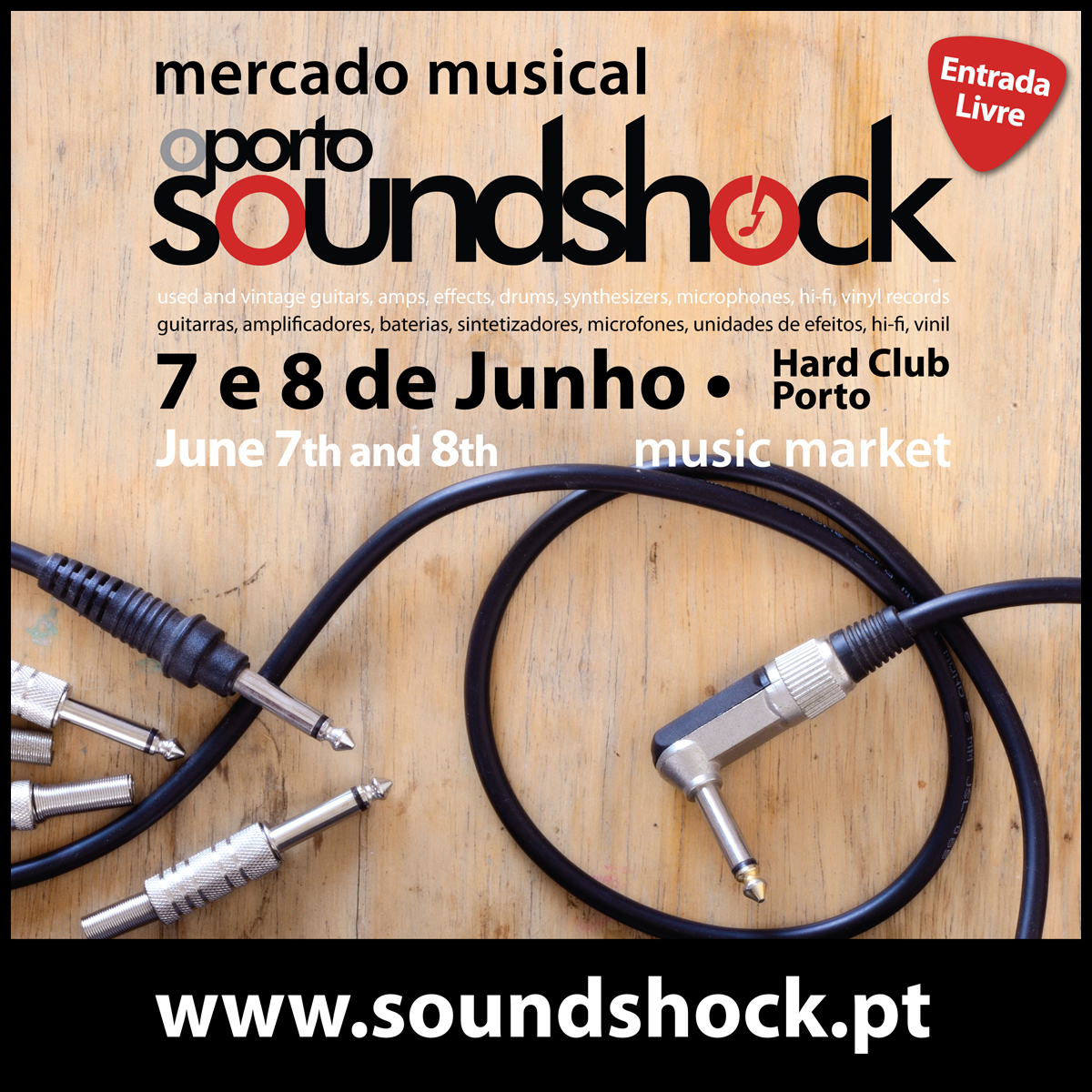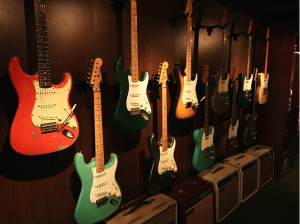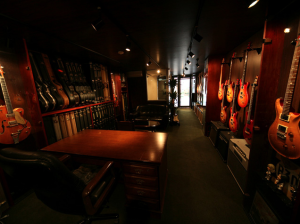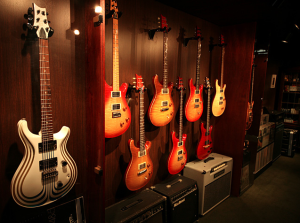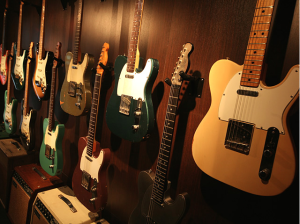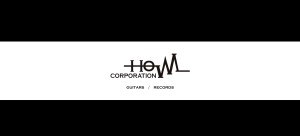Hi Ray, thank you for taking your time to speak to us. Could you please tell as a little bit about Grinning Elk? Where are you located?
Lee and I have been attending shows together since 2000. At the time, I owned an electronics repair service and was well- established here in my hometown. Lee walked into my office one day and as we were talking, I asked him, “What exactly do you do, Man”? He answered, “I buy and sell vintage guitars”. Well, I had always been a gear junkie, having played in various bands around Atlanta for years and I thought that his answer sounded very intriguing, so I asked if I could go to a show with him sometimes. He said, “Sure” so in October 2000, we drove out to the Arlington, Texas show and on the way back, the idea of forming a company was born. Our office is in Douglasville, Ga., which is about 20 miles West of Atlanta.
What initially motivated you to set up a music store, and when was that?
We don’t have what is referred to as a “brick and mortar” store. We are primarily a web- based business and have an appointment only office where clients can set up a time to come and visit. Our office and company was officially opened in Sept. 2006.
In EU the current Gibson case “lacey act” has gotten a lot of attention, what is your perspective on shipping between US & EU? Have you had any problems regarding this case so far?
Not yet. In the last year, we have been asked to send only two guitars that had Brazilian Rosewood overseas. Both were vintage Martins and we decided that rather than take a chance on them being confiscated, we would sell them here in the U.S. Thankfully, our clients understood and the guitars sold easily here.
Do you play music yourself? If so, what do you play, for how long have you been doing it?
I have been playing bass since about 1987, which was right after I got out of the Army. Lee’s been playing guitar since the late 70’s, when he was in high school. I think he even won a talent show back then, so he obviously got an earlier start than I did. He’s a much more accomplished musician than I am. He’s taller too.
The Elk Nation….James Hetfield….could you tell us a bit more about that?
That was one of the best days of my life. It was a Sunday and I was lying on my couch, watching TV. Metallica was playing Atlanta that night and was thinking I’d get tickets down at the arena right before the show started. Lee called me up and said, “Pull out those two Flying V’s and the ’65 Strat. We might be showing them to the guys in Metallica this afternoon”. I probably said something like “Yeah, sure we are” but he insisted that I get up off my comfortable couch and get ready. So I begrudgingly did as he asked, thinking that this was a cruel joke because you just didn’t get to go meet Metallica on a Sunday afternoon, but sure as shootin’, two hours later, we were standing at the service entrance to Phillips Arena with those guitars in hand. James’ guitar tech, Zak took us into a room where we laid the guitars out and it wasn’t long before Hetfield walked in and started checking them out. He eventually bought the white ’75 Flying V. We later showed the Strat to Kirk Hammett, but he said it was too clean and “not vibey enough”. Go figure that one out!
What do you consider the biggest challenge for dealers of musical instruments today?
I think the most difficult part of our business today is completing a deal over the telephone or by email. It’s a challenge to sell a piece to someone that is halfway around the world with only a written description or with words spoken on the phone. We want to make sure that the guitar or bass being discussed is exactly what our client is looking for and will fit his or her needs. The last thing we want is to mail a guitar across the planet only to have it come back. We try to do all of the legwork and preparation before the guitar goes out so that when it arrives at its new home, the customer opens the case and says “wow”. That’s our goal with every transaction.
How do you choose what products to carry?
That’s another challenge in itself. We are so picky when it comes to condition and originality, the pool of instruments we will consider buying is a small one. We want them all to be as close to new as possible and completely original. Every once in a while, we’ll purchase a guitar that might have broken solder joints or a replaced nut, but it’s a rare occasion. There’s even a term that’s been coined in our industry- “Elk clean”. I hear it all the time at the shows we attend and I’d like to think that it refers to best of the best.
What is the oddest guitar you’ve ever sold?
A few years ago, at the Philadelphia Guitar Show, we bought a 1986 Kramer Triax that was virtually unplayed. It was flip- flop pink and had its original flight case and all of the tags. Very cool and very 80’s!
Do you have any personal favorite guitars in your shop? If so, why is said guitar your favorite?
My favorite guitars are usually basses, so at the moment, it’s a Rickenbacker 4003s8. It’s an 8- string bass in Desert Gold that was made as a “color of the year” piece in 2001. There can’t be more than one or two in the world. In terms of favorite guitars, we have the first Murphy- aged Les Paul ever made at Gibson and it’s one of the most authentic looking ’59 reissues we’ve ever seen. I think Lee’s got that one stashed away somewhere so I can’t get my hands on it.
Given that this is for a blog, what role has technology (the internet, your website, etc.) played in the success of your business?
Well, it has exposed us to the entire world. Anybody, anywhere with a little electricity, an internet connection or a smart phone can look at our inventory and buy from us. Think about it: prior to the establishment of the internet, most guitar dealers sold their gear from a store and if they did have any national or international exposure, it would have been through magazine advertisements. Now, you can place a banner on a forum and be seen by literally millions of visitors to that forum a year. I once sold a 1967 Stratocaster to a gentleman in Belgium from my Blackberry, sitting in the parking lot of a local post office. You couldn’t do that ten years ago.
Is there a general trend to the people who purchase from you, in terms of how skilled or experienced they are?
The majority of our clients are professionals, serious collectors and higher- end musicians. They know their stuff when they call, they like what they see on our website so generally, the only thing left to discuss is price. The gear we have speaks for itself.
What advice would you give to somebody looking to purchase a guitar from you?
If you’ve never heard of us, check us out. Another important aspect of the internet is, if you consistently perform at a high level, people will say so. The various forums have become powerful mediums and people all over the world talk about their purchases, experiences, etc. If you make just one person unhappy, they will certainly say something about it somewhere. Your reputation is the most important thing your company can have. It’s everything.
Any famous last words?
Sure. It’s a Latin saying: “audentes fortuna iuvat, which means “Fortune Favors the Bold”. Or, on a lighter note, Two Elks are always better than one…
In 2010 V&R visited Arlington Guitar Show and Ray was kind enough to introduce us to some of his pieces: (The interview with Ray Mauldin starts at 1:43)
A selection of Grinning Elk pieces:
Korina Explorer R9
Gibson ES330T
Rickenbacker 660/12 Tom Petty
Gibson USA map guitar

